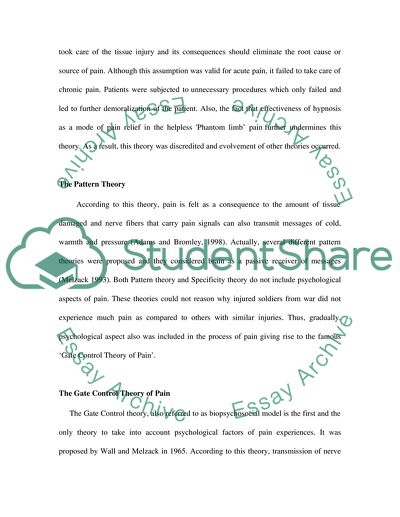Cite this document
(“The Psychological Theories about Pain Essay Example | Topics and Well Written Essays - 1000 words”, n.d.)
Retrieved from https://studentshare.org/psychology/1541432-the-psychological-theories-about-pain
Retrieved from https://studentshare.org/psychology/1541432-the-psychological-theories-about-pain
(The Psychological Theories about Pain Essay Example | Topics and Well Written Essays - 1000 Words)
https://studentshare.org/psychology/1541432-the-psychological-theories-about-pain.
https://studentshare.org/psychology/1541432-the-psychological-theories-about-pain.
“The Psychological Theories about Pain Essay Example | Topics and Well Written Essays - 1000 Words”, n.d. https://studentshare.org/psychology/1541432-the-psychological-theories-about-pain.


